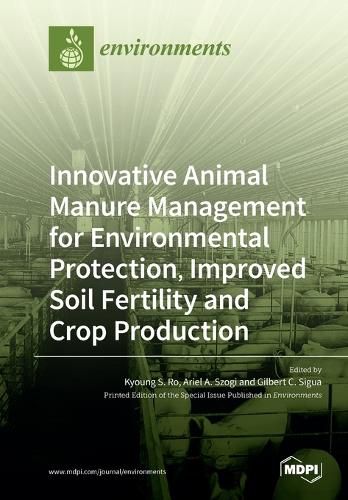Readings Newsletter
Become a Readings Member to make your shopping experience even easier.
Sign in or sign up for free!
You’re not far away from qualifying for FREE standard shipping within Australia
You’ve qualified for FREE standard shipping within Australia
The cart is loading…






This title is printed to order. This book may have been self-published. If so, we cannot guarantee the quality of the content. In the main most books will have gone through the editing process however some may not. We therefore suggest that you be aware of this before ordering this book. If in doubt check either the author or publisher’s details as we are unable to accept any returns unless they are faulty. Please contact us if you have any questions.
Traditionally, livestock manure has been used to provide nutrients for plant growth and to improve soil conditions. However, the increase in concentrated animal feeding operations (CAFOs) results in high levels of plant nutrients, such as nitrogen and phosphorus, in the proximal crop and pasturelands as a result of applying more manure than what is required to meet the local plant nutrient demand. Soil runoff and leaching of land-applied manure can enrich the surface and ground water with nitrogen and phosphorus, leading to eutrophication and hypoxia. In addition, overapplication of animal manure contributes to pathogen spread, the release of hormones and other pharmaceutically active compounds, and the emission of ammonia, greenhouse gases, and odorous compounds. In this Special Issue, we present 11 interesting articles covering the production of renewable energy and fuels, extraction of ammonia from animal manure, the agricultural and environmental benefits of using animal manure or its derived materials such as biochar or ashes, and the difference in microbial communities and pathogen survival after anaerobic lagoon treatment.
$9.00 standard shipping within Australia
FREE standard shipping within Australia for orders over $100.00
Express & International shipping calculated at checkout
This title is printed to order. This book may have been self-published. If so, we cannot guarantee the quality of the content. In the main most books will have gone through the editing process however some may not. We therefore suggest that you be aware of this before ordering this book. If in doubt check either the author or publisher’s details as we are unable to accept any returns unless they are faulty. Please contact us if you have any questions.
Traditionally, livestock manure has been used to provide nutrients for plant growth and to improve soil conditions. However, the increase in concentrated animal feeding operations (CAFOs) results in high levels of plant nutrients, such as nitrogen and phosphorus, in the proximal crop and pasturelands as a result of applying more manure than what is required to meet the local plant nutrient demand. Soil runoff and leaching of land-applied manure can enrich the surface and ground water with nitrogen and phosphorus, leading to eutrophication and hypoxia. In addition, overapplication of animal manure contributes to pathogen spread, the release of hormones and other pharmaceutically active compounds, and the emission of ammonia, greenhouse gases, and odorous compounds. In this Special Issue, we present 11 interesting articles covering the production of renewable energy and fuels, extraction of ammonia from animal manure, the agricultural and environmental benefits of using animal manure or its derived materials such as biochar or ashes, and the difference in microbial communities and pathogen survival after anaerobic lagoon treatment.